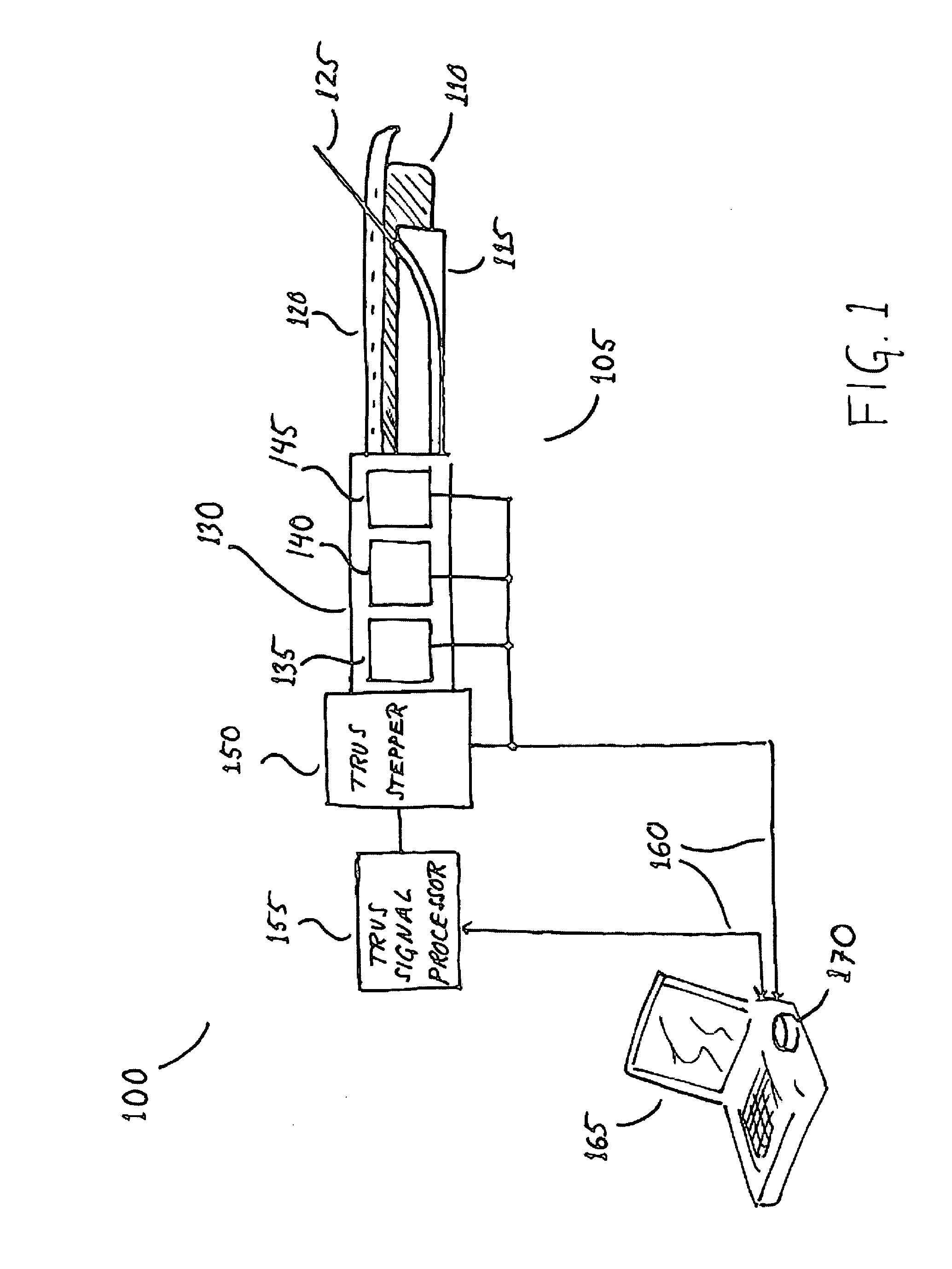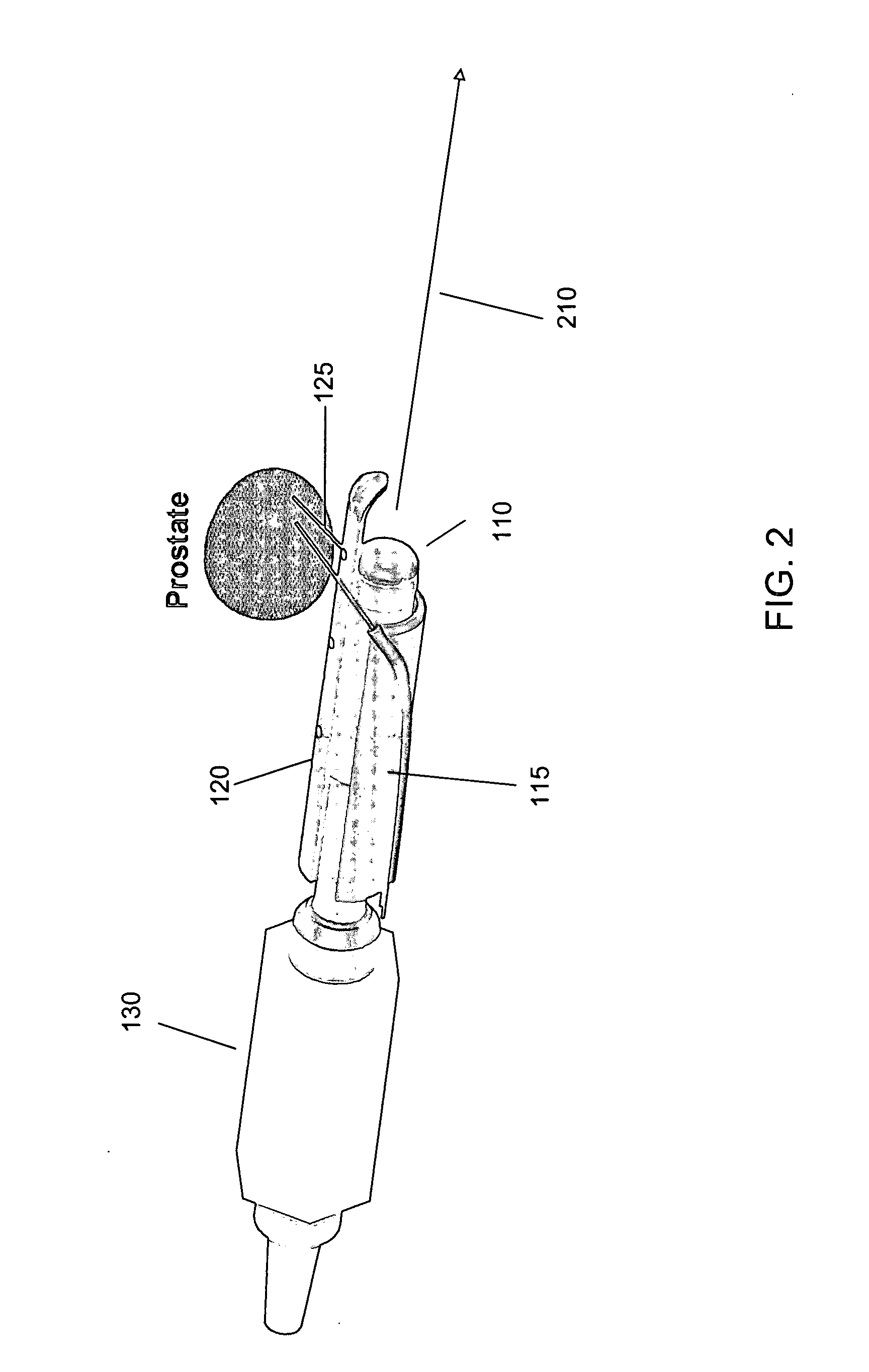Transcavital needle insertion device
a transcavital needle and catheter technology, applied in the field of controllable transcavital needles and catheters, can solve the problems of affecting the registration of ultrasound imagery, rendering the placement of transrectal needles imprecise and unpredictable, and affecting the accuracy of ultrasound imaging registration, so as to improve the placement of therapeutic needles, improve the accuracy of image guided placement, and improve the effect of guidan
- Summary
- Abstract
- Description
- Claims
- Application Information
AI Technical Summary
Benefits of technology
Problems solved by technology
Method used
Image
Examples
Embodiment Construction
[0030]FIG. 1 shows a system 100 for inserting one or more needles 125 into a prostate for the purposes of cancer treatment. The system includes a transcavital needle placement device 105, which comprises a transrectal ultrasound (TRUS) probe 110; a TRUS stepper 150; a needle guide sheath 115; and a set of positioners 130, which includes a guide sheath rotational positioner 145; a guide sheath translational positioner 140; and a needle depth positioner 135. In addition to the device 105, the system 110 includes a TRUS signal processor 155, and a computer 165, which stores and executes software 170 according to the present invention.
[0031] For the purposes herein, “positioner” includes any device or devices for establishing and measuring the position of the guide sheath 115 or the needle 125. For example, a positioner may include a motor, a gear mechanism, and an encoder. The motor may be an electric motor. Alternatively, the positioner may include a handle in place of the motor, and...
PUM
 Login to View More
Login to View More Abstract
Description
Claims
Application Information
 Login to View More
Login to View More - R&D
- Intellectual Property
- Life Sciences
- Materials
- Tech Scout
- Unparalleled Data Quality
- Higher Quality Content
- 60% Fewer Hallucinations
Browse by: Latest US Patents, China's latest patents, Technical Efficacy Thesaurus, Application Domain, Technology Topic, Popular Technical Reports.
© 2025 PatSnap. All rights reserved.Legal|Privacy policy|Modern Slavery Act Transparency Statement|Sitemap|About US| Contact US: help@patsnap.com



